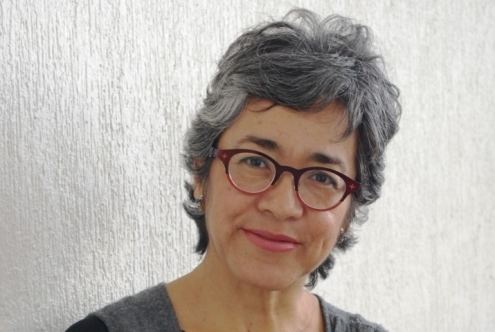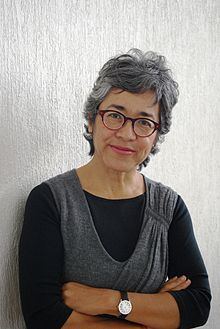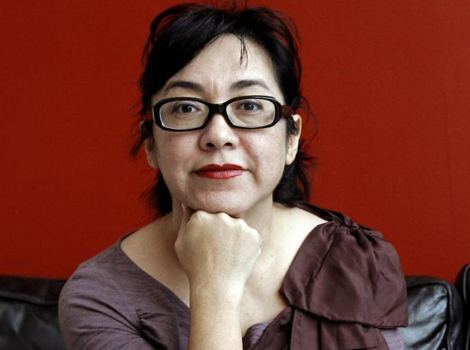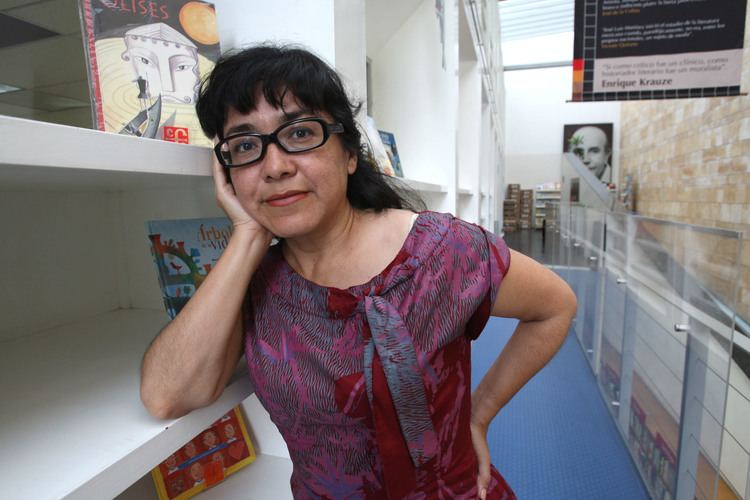Occupation writer and professor Name Cristina Garza Language Spanish/English Role Author | Nationality Mexican Books No one will see me cry | |
 | ||
Genre novels, poetry, short stories, etc. | ||
Notable works Nadie me vera llorar | ||
producir el presente escrituras digitales hoy por cristina rivera garza
Cristina Rivera Garza (born October 1, 1964) is a Mexican author and professor best known for her fictional work, with various novels such as Nadie me verá llorar winning a number of Mexico’s highest literary awards as well as awards abroad. The author was born in the state of Tamaulipas, near the U.S. border and has developed her career in teaching and writing on both sides of the border. She has taught history and creative writing at various universities such as the National Autonomous University of Mexico (UNAM), Tec de Monterrey, Campus Toluca and her current position at the University of California, San Diego. Awards include the Juan Vicente Melo National Short Story Award, Sor Juana Inés de la Cruz Prize (the only author to win this award twice) and the Anna Seghers International Prize.
Contents
- producir el presente escrituras digitales hoy por cristina rivera garza
- Acentos la funci n del escritor con cristina rivera garza programa 38
- Life
- Teaching career
- Writing career
- Philosophy and style
- Recognition
- Publications
- Novel
- Short Story Collections
- Opera
- Poetry
- Non Fiction
- As Editor
- Rivera Garzas Translations
- References

Acentos la funci n del escritor con cristina rivera garza programa 38
Life

Rivera Garza was born in Matamoros, Tamaulipas, in the northeast of Mexico near the border with the United States. She is bilingual in English and Spanish with her desire to write forming her teen years.

She did her undergraduate studies at ENEP-Acatlán (part of UNAM) in sociology, then went on to study her master’s in Latin American history at UNAM. She holds a Ph.D. in History from the University of Houston (1995). Her doctoral thesis was on the subjection of the human body to state power in mental asylums in early 20th century Mexico.

She has lived in various places in Mexico as well as in the United States, developing her teaching career on both sides of the border, living in Mexico City, Toluca, Houston and San Diego. Rivera Garza spent some of her “decisive years” studying in Mexico City, which she says has given her a personal and intimate relationship with Mexico’s capital, featured in her novel “Nadie me verá llorar.” However, she never permanently moved to the capital, which is Mexico’s literary center, making her feel outside of the country’s literary scene. She has also stated that she does not like the concentration of Mexico’s culture on the capital.

While she declines to use words to describe herself, she does state that “I am me and my keyboard.” She states that her personality is not fixed, and such would be limiting. Rivera Garza maintains interests in narrative, history, and the nature of human language/communication. She believes that writing can be a question of life or death, and that writers should misbehave in real life as well as in the imagination to be connected to the world and better able to tell stories.
Teaching career
She has always had a full-time job in teaching, which limits her time for creative writing, for which she is better known. Her first professorship was with San Diego State University from 1997 to 2004, teaching Mexican history. In 2001 CECUT/Centro Cultural de Tijuana invited her to teach a class in creative writing, which she says changed her “personal dynamics, a lot of my relationships with Mexico” being in a Spanish dominant academic environment again.
In 2004, she returned to Mexico as a professor of humanities at Tec de Monterrey, Campus Toluca, where she was co-director. In 2008, she returned to San Diego as a professor of creative writing at the literature department of the University of California, San Diego.
She has also taught at UNAM, Universidad Autónoma del Estado de México (UAEM), DePauw University, and has done research into popular conceptions of insanity and the history of psychiatry in Mexico. Her research work has appeared in journals such as Hispanic American Historical Review, the Journal of the History of Medicine and Allied Sciences, as well as journals in England and Argentina.
Writing career
She is one of Mexico’s most prolific writers of her generation, receiving grants from CME (1984), FONCA (1994, 1999), and the Centro de Estudios México-Estados Unidos (1998). In addition to writing books, she has collaborated with publications such as El Cuento, El Sol de Toluca, Excélsior, La Guillotina, La Palabra y El Hombre, Macrópolis, Nacional, Punto de Partida, Revista de la UAEM and San Quintin.
Rivera Garza has also explored the digital realm as a venue for the publication of creative works. This began with blogging, starting with a now defunct site called Blogsívela, a novel/blog written with the participation of readers. She has blogged since the late nineties with her current blog dating from 2004. However, instead of using her blog solely for promotional purpose like most other writers, Rivera Garza uses the resource to publish material that is more experimental and unconstrained by the requirements of traditional publishing. She has also experimented with Twitter (@riveragarza), with her tweets described as developing meta commentaries both on tweeting and on literature, stating “Look at it this way: an article is three or four tweets surrounded by text.” She coined the term “tweetnovel” (tuitnovela in Spanish) as a timeline written by the characters. Various people participate in the creative but there is someone responsible for the timeline.
Philosophy and style
Rivera Garza’s works have been described as a “disturbing pleasure.” As a writer, she aims to darken thing and make readers suspicious, believing that “there is too much light and clarity in the world” as well as too much communication and messaging. She does not write to create stories, nor to express herself or convince her readers to her point of view. Instead she believes she is producing a kind of reality, agreeing with poet Caridad Ascensio that books provide travel through a state of mind. She does not believe the purpose of fiction is to inform, as there are other ways to do this, but rather she views writing as a physical manifestation of thinking. Rivera Garza believes that literature is one of the few ways people can explore the limits of human experience through language, stating that the books that have impacted her the most are those that made her think.
Most of her creative work is a hybrid of styles, genres and elements. She mixes styles such as narrative, poetry, short story and novel. She blends elements from her imagination, along with those of reality including historical documents and even included herself in one of her novels. Her work has often focuses on those marginalized, such as insane people and prostitutes and challenges the idea that concepts such as sex, nation or narrative identity are stable. Several of her works are influenced by her experience on both sides of the border, primarily writing in Spanish but has written in English as well.
Recognition
Rivera Garza is one of Mexico’s best-known writers, having won six of Mexico’s highest literary awards. Jorge Volpi has named her his favorite writer. Her work, especially “Nadie me verá llorar” has been praised by critics, such as Carlos Fuentes, who stated that it has not received the attention that it deserves.
Her work has earned her various forms of recognition starting in the 1980s with the Punto de Partida Poetry Competition in 1984 for Apuntes and the San Luis Potosí National Short Story Prize in 1987 for La guerra no importa. In the 1990s her first novel, “Desconocer” was a finalist at the 1994 Juan Rulfo Prize .
In 2001 she won the Juan Vicente Melo National Short Story Award, and was chosen as a member of the SNCA from 2003 to 2005.
Her first international award was the Anna Seghers International Prize, awarded in Berlin in 2005.
Her most recognized work is Nadie me verá llorar which received the 2000 IMPAC/CONARTE/ITESM National Award for Best Published Novel in Mexico, the Sor Juana Inés de la Cruz Prize in 2001 along with 1997 José Rubén Romero National Literary Award for Best Novel and was a finalist at the IMPAC Dublin International Prize. Carlos Fuentes called it “one of the most perturbing and beautiful novels ever written in Mexico.”
She won the Sor Juana Inés de la Cruz Prize again in 2009 for La muerte me da the only author to win this award twice.
In 2012, Rivera Garza received an honorary doctorate in Humane Letters from the University of Houston.
The author is also the recipient of the Roger Caillois Award for Latin American Literature (Paris, 2013).
Publications
Rivera Garza’s work has been translated into English, Portuguese, German, Italian and Korean.
Novel
Short Story Collections
Opera
Poetry
Non Fiction
As Editor
Rivera-Garza´s Translations
From Spanish into English:
From English into Spanish:
